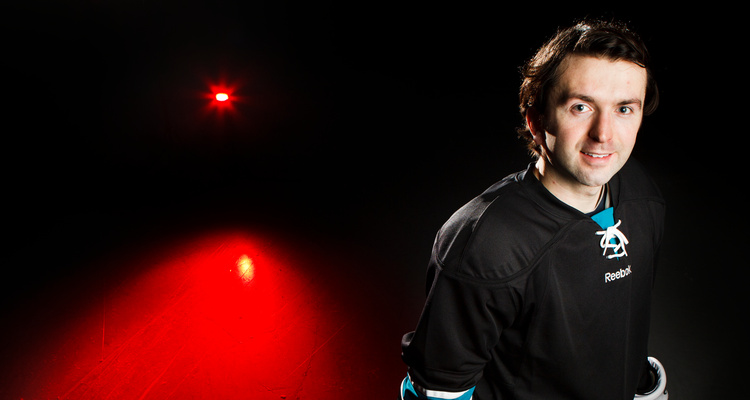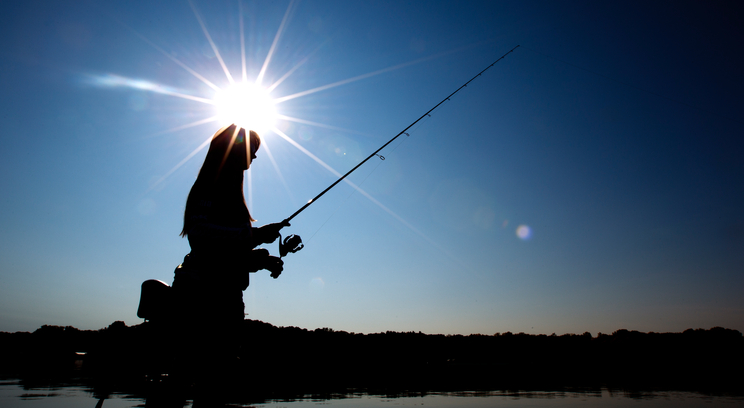Ever wonder what it’s like to travel 40 miles per hour ... on skates?
Now add a couple of fierce competitors, roller coaster peaks, blind drop-offs and unanticipated turns.
Welcome to Red Bull’s Crashed Ice competition. The speed alone will make your stomach jolt.
“To be honest, the run went by so fast and I was so focused, I didn’t really take it all in,” said Jon Palmeri ’07, who first raced in the Crashed Ice world championship event in St. Paul last winter. He placed seventh among all the U.S. competitors in 2012 and competed again in January 2013. Craig Kaufman ’08 also raced in the 2012 event.
Officially known as ice cross downhill, the sport is similar to downhill skiing. But on ice.
The 400-meter track began at the Cathedral of St. Paul. Gravity propels the competitors down Cathedral hill, accelerating through drops as high as 31 feet before completing the quarter-mile-long track near the intersection of Kellogg Boulevard and Interstate 35E.
Red Bull has hosted the championship series since 2001, when the sport originally gained popularity in Stockholm, Sweden. The world championship has traveled to other countries in Europe and first came to the United States in 2003 in Duluth.
As the name “Crashed Ice” denotes, there are plenty of crashes on every run. The athletes are outfitted in typical hockey gear – helmet, gloves, jersey and hockey pads – and race four at a time down the track. But unlike hockey, checking and any intentional physical contact are not allowed, and athletes may be disqualified.
Palmeri decided to enter the race after a friend showed him photos from his participation in Canada in 2011.
After one of his practice runs, Palmeri observed, “The trickiest part of the track, in my opinion, was the double jump, which was taking victims run after run. I had a few crashes there and also one high-speed crash on a wall where I actually put my skate through the boards. The odd part was I didn’t get stuck. The skate punched a hole in the plastic boards and my momentum kept me moving down the next icy ramp.”
After qualifying in Duluth in fall 2011, Palmeri then competed on the big track in St. Paul in January 2012. There were two rounds of timed speed tests on the course. The top 64 of the 128 athletes in both rounds advanced to the elimination round.
Most of the U.S. participants had never experienced skating down an ice track filled with obstacles. The first time was a memorable experience for Kaufman.
“When I got to the top of the starting ramp, I remember looking down and seeing what seemed like a never ending sea of people. It was loud with everyone cheering and the music blaring. I looked to my left and saw three of my competitors who looked very focused and intense. My nerves really kicked in.”
Because competitors don’t have a track to practice on during the weeks leading up to the competition, there wasn’t much training involved. For his first competition, Palmeri just intensified his workout routine and practiced his skating skills more frequently.
Having a background in other extreme sports is perhaps the best way an athlete can anticipate an event like Red Bull’s Crashed Ice. Some of the world championship participants have competed at the X-Games in skiing or snowboarding. One was an Olympic-bound speed skater, and some of the international competitors are bandy players.
Palmeri’s experience competing in extreme sports gave him confidence heading into the race. “I grew up mainly playing hockey but I also liked BMX racing in the summer, and I’ve also done motocross racing, skiing and snowboarding,” Palmeri said. “They’re very similar to Crashed Ice in how you approach obstacles while going at high speeds. It takes a little of the fear factor out of it for me.”
Palmeri, from St. Paul, played hockey through high school, but once he got to college he had to make a decision that many student-athletes face: Do I keep playing my sport?
“I played hockey very competitively and then had opportunities to play further, but I just wanted to go to school and learn, graduate, work and be done,” Palmeri said.
Fortunately, hockey remained an important part of his life. Palmeri’s college roommate, Brett Lawler ’08, along with Rian Cleary ’08, founded the St. Thomas club hockey team in 2006. Palmeri joined the team and found a good balance between studying and playing his favorite sport. In the summers, Palmeri played in the Minnesota Pro 4- on-4 league, where he practiced with NHL, Division I, and European professional players.
Like Palmeri, Kaufman played hockey growing up, but he continued playing at the collegiate level on St. Thomas’ varisty team from 2005 to 2007. It’s no surprise that both have found their hockey background helpful in competing in the Crashed Ice event.
One subtle difference between the two sports is the skates. Ice cross downhill competitors use bandy blades which offer more stability during the downhill run. Bandy combines elements of hockey and soccer, and is quite popular in Europe and Russia.
The added stability of the bandy blades were needed at this year’s Crashed Ice event in St. Paul, where the starting gate was 48 feet high – a full 12 feet higher than last year’s course.
Last year more than 80,000 hardy spectators attended the Crashed Ice event in St. Paul. Given that the NHL lockout left many Wild hockey fans without much to do this fall and early winter, the city of St. Paul is hoping for an even larger turnout this year.
For Palmeri and Kaufman, the Crashed Ice competition will extend their passion for high-speed competition and winter sports – two things Minnesotans are eager to support.
Read more from St. Thomas Magazine.







